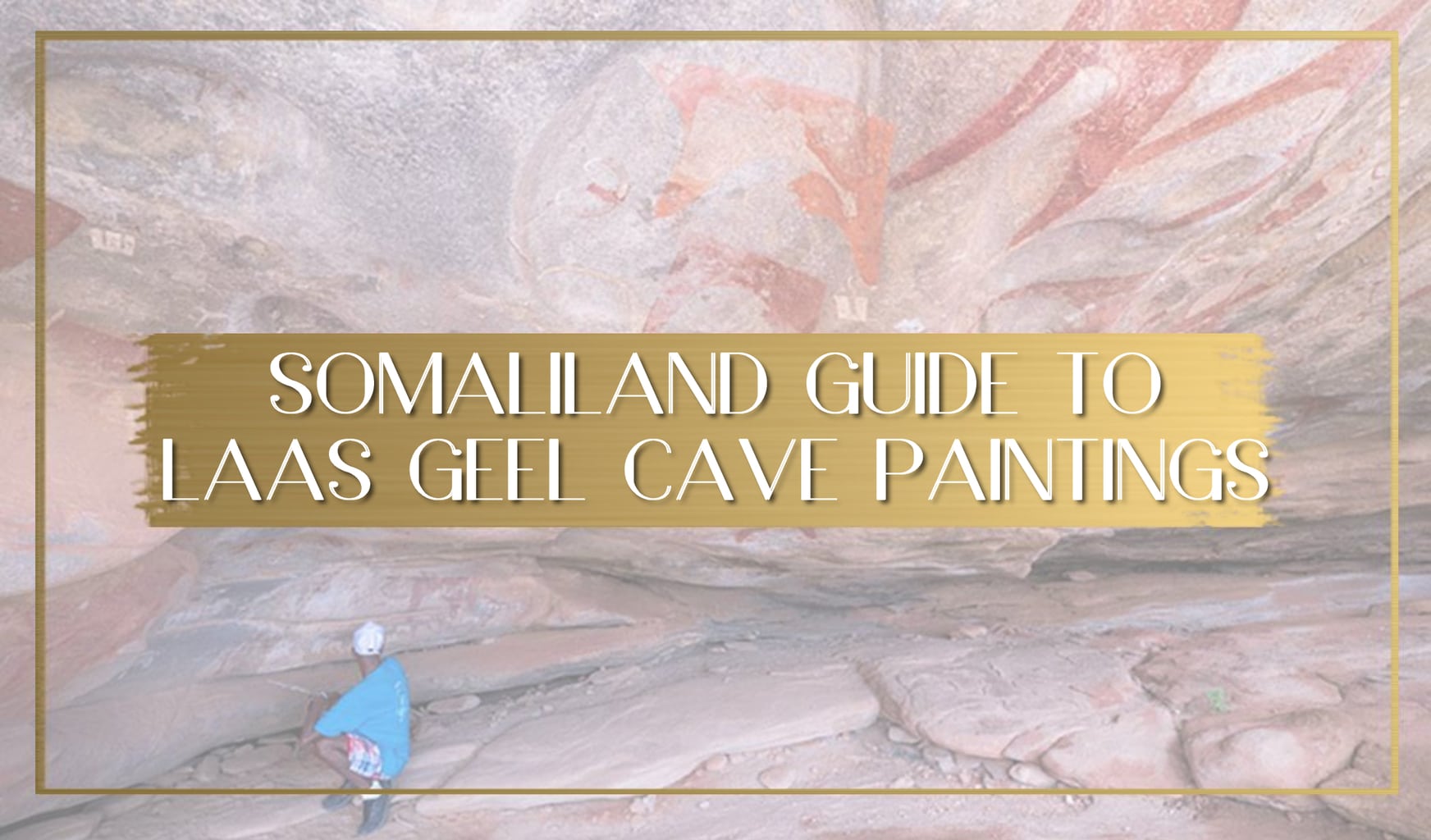
Perhaps the best and most popular place to visit in Somaliland is Las Geel, or Laas Geel as is spelled locally. It is a group of cave paintings dating back to 3,000 BC that are some of the oldest and best preserved examples of rock art in Africa.
If Laas Geel was anywhere else it would have been added to the UNESCO World Heritage List but, since it is located in the unrecognised Republic of Somaliland, these stunning cave paintings are just an item in a Somaliland travel bucket list.
Laas Geel was one stop in my 5 day journey through Somaliland, one of the least visited countries in the world. For my complete travel guide to Somaliland click here. For some fun and interesting facts about Somaliland, you can read this article.
The story behind Laas Geel
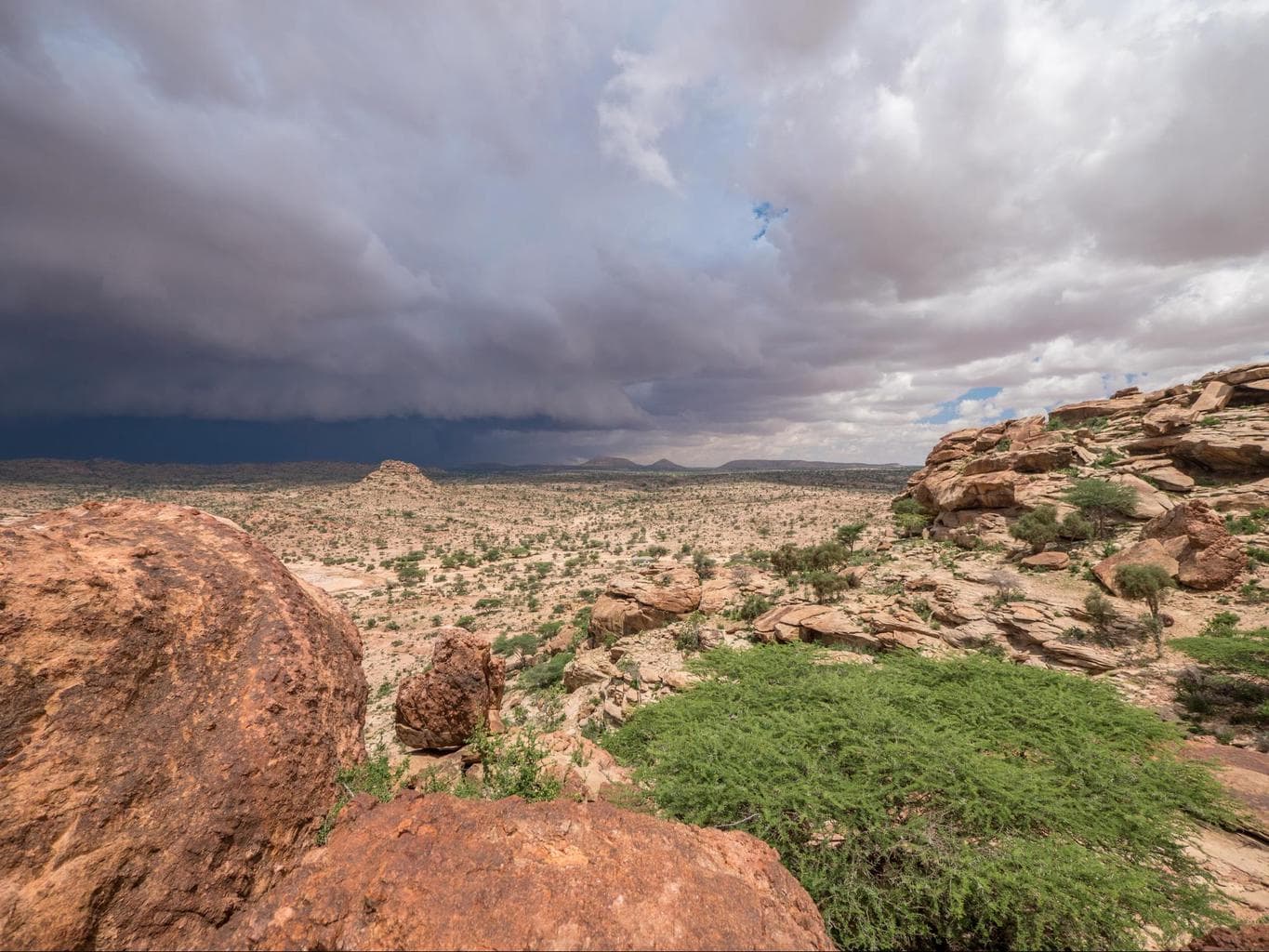
Laas Geel is made of a series of shelters covered in rock paintings located about a 2h drive from the capital of Hargeisa and dating back to between 3,000 BC and 9,000 BC.
The name of the caves comes from the name of the massif and rock of the same name which means “The dromedaries waterhole” in the local language. This name is obvious when you climb up to its highest point or when it rains and the two wadis that encircle the site fill with water. Otherwise, the surroundings are rather bare and only dotted by small bushes and acacia trees.
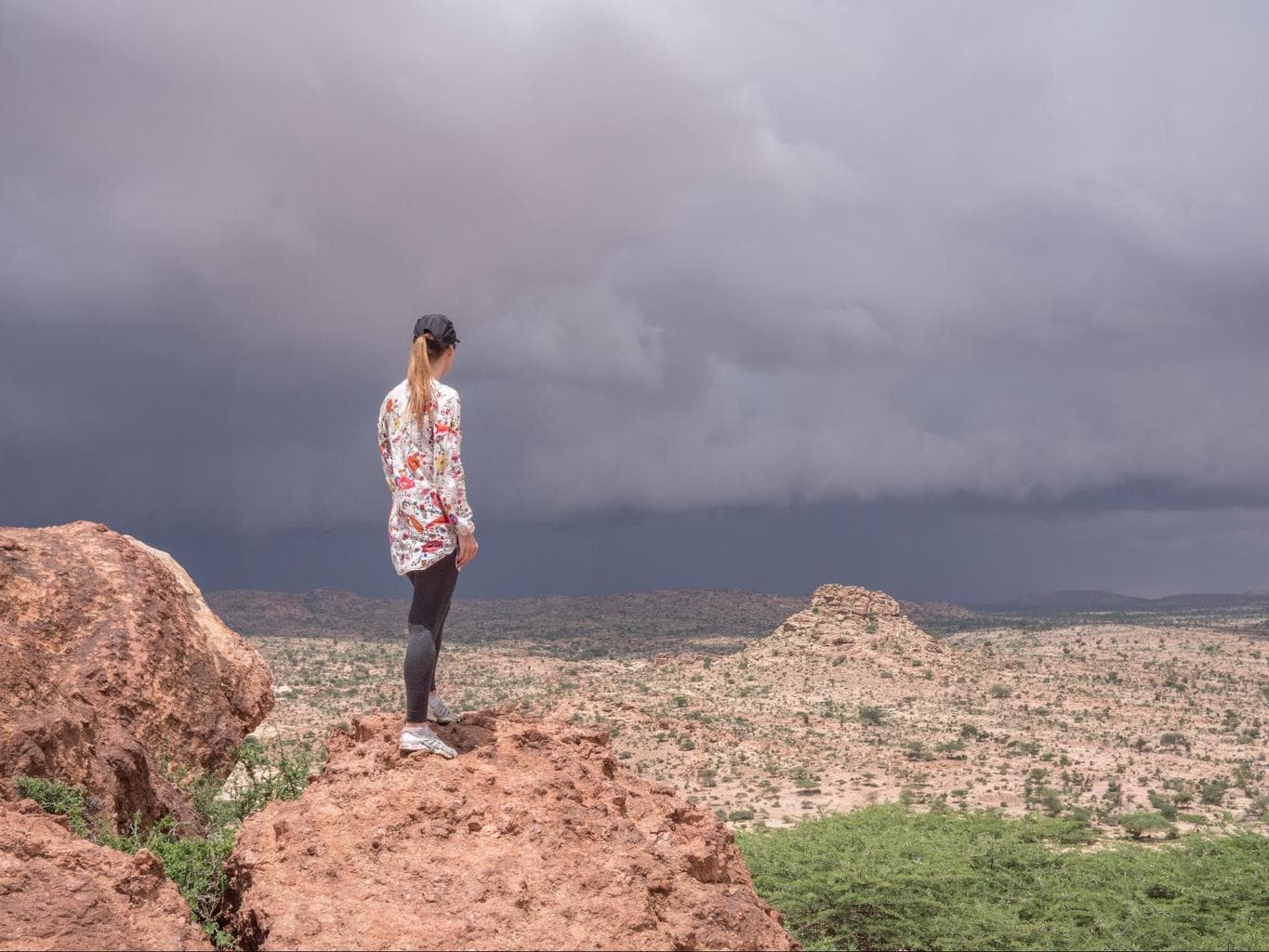
Although Laas Geel had been known to locals for centuries, its status as a cursed place where the Devil lived meant that it was off-limits for everyone. It was not until a group of French researchers were directed by a local herder who sheepishly pointed at the caves in 2002, that they were discovered to the Western world.
Laas Geel is not the only rock art in Somaliland, there are a few other important sites discovered before in Dhagax Khoure, 45 km from Hargeisa, and in Dhambalin, 100 km east of the coastal town of Berbera. Some estimates indicate there could be hundreds more art rock sites in Somaliland to be discovered.
Archaeological research and studies of Laas Geel
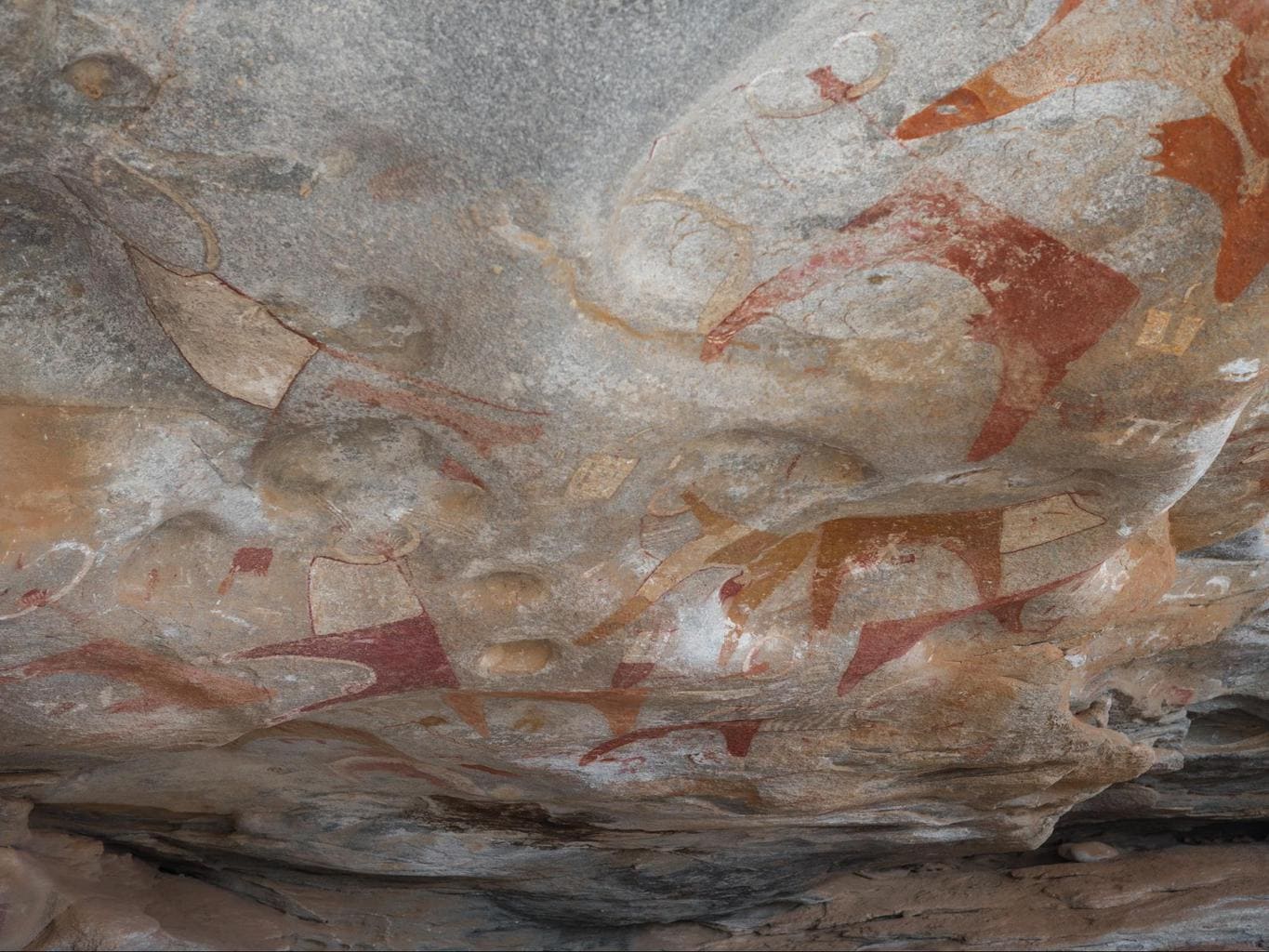
The first research and exploration of the caves took place in 2002 and was financed by the French Government and the University of Paul Valery in Montpellier. The Director of the project, Xavier Gutherz, led a team of scientists that studied the caves and carried out several experiments to understand the materials and techniques used and the date in which the caves were painted.
The researchers were looking for rock art and sediment that could shed some light into the development of the Horn of Africa but it has not been possible to determine the exact age of the paintings or the technique with which they were created. Attempts to replicate the pigmentation used have failed.
Laas Geel was visited by UNESCO inspectors but since Somalia has not ratified the 1972 World Heritage Convention, the UN cannot list the site and thus, it receives no support for conservation.
Visiting Laas Geel – What to see
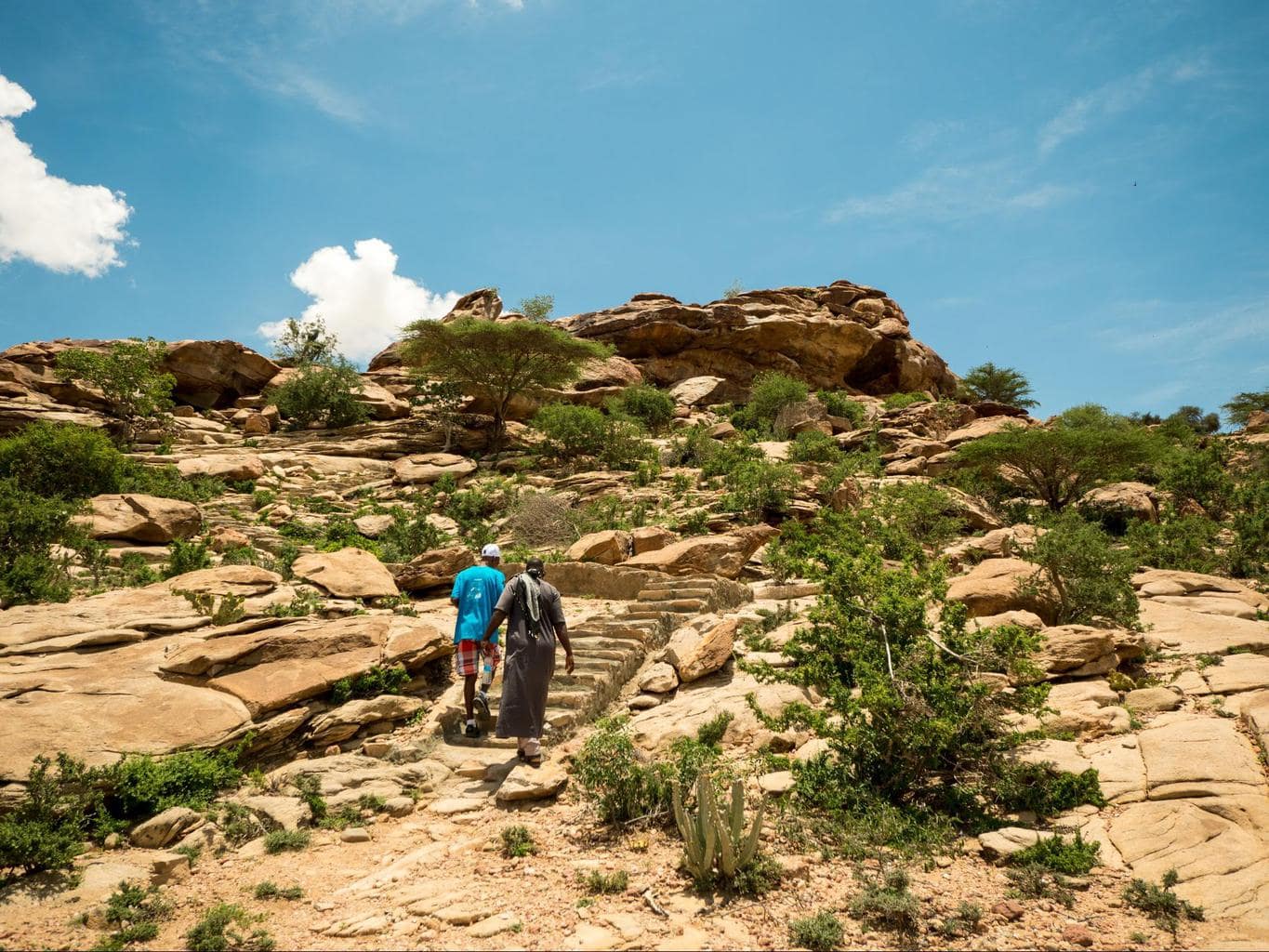
The paintings at Laas Geel are spread across 20 shelters split into three levels some of which can be as wide as 10 meters and as deep as 5 meters. All the shelters and paintings are within walking distance from each other and can be explored in a couple of hours. The highest point in the rock of Laas Geel is 950m high.
There are steps that lead to some of the higher levels but access can be tricky with the last steps taken on the slippery granite boulders.
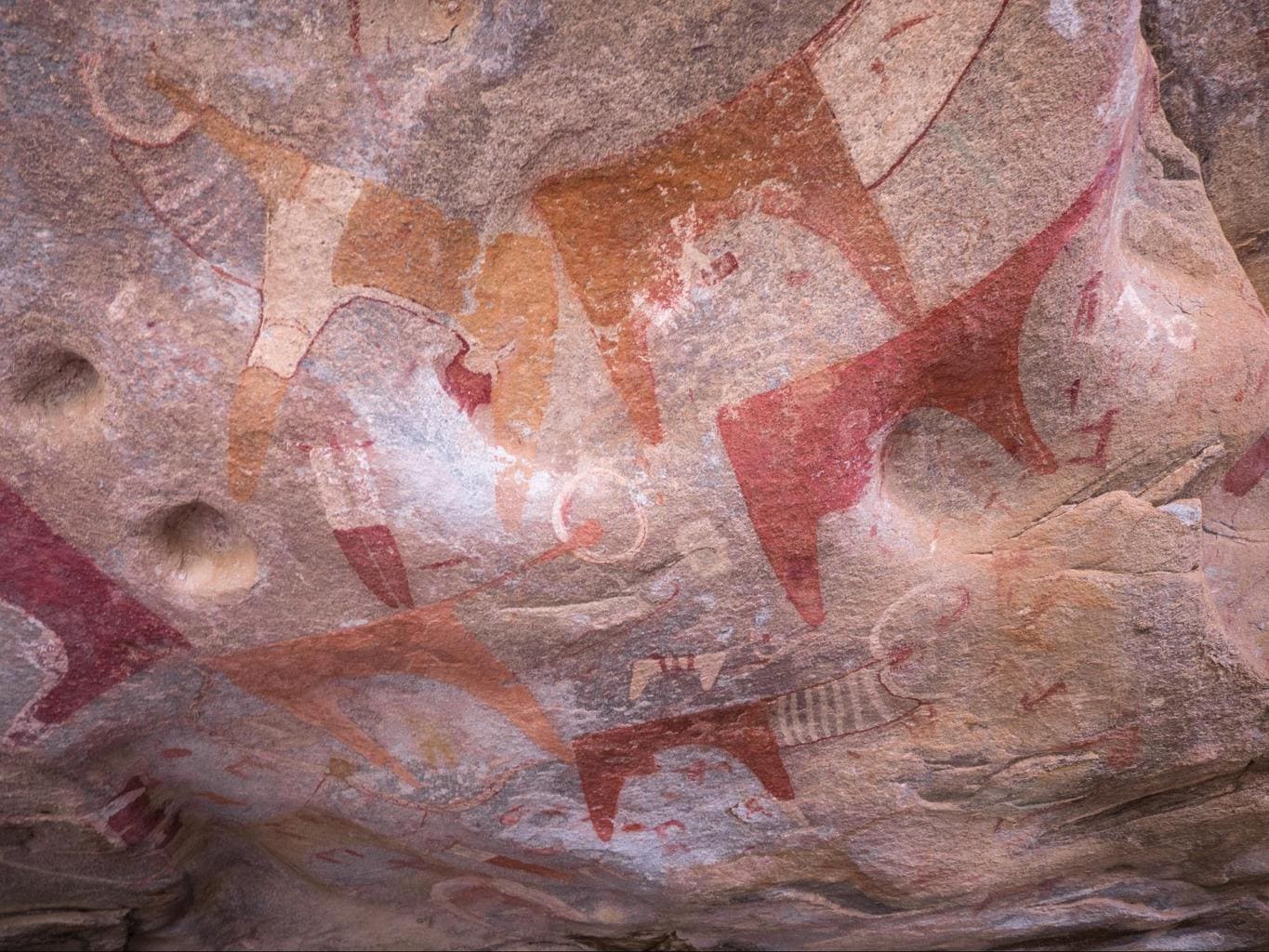
The paintings in Laas Geel depict scenes of daily life of the nomads who inhabited the area and their animals as well as ceremonial scenes. Some of the paintings are monochrome and others polichrome but they are all remarkably well-preserved and vivid for something which is thousands of years old. The colors used are warm, either red, yellow or orange. White and black are rarely used.
The most commonly painted figure in Laas Geel is a bovine, cow or bull, a human herder followed by a sort of canine. Other animals also make an appearance and provide insights as to the wildlife existing in the area. For example, in some shelters you can see a giraffe or a sort of antelope.
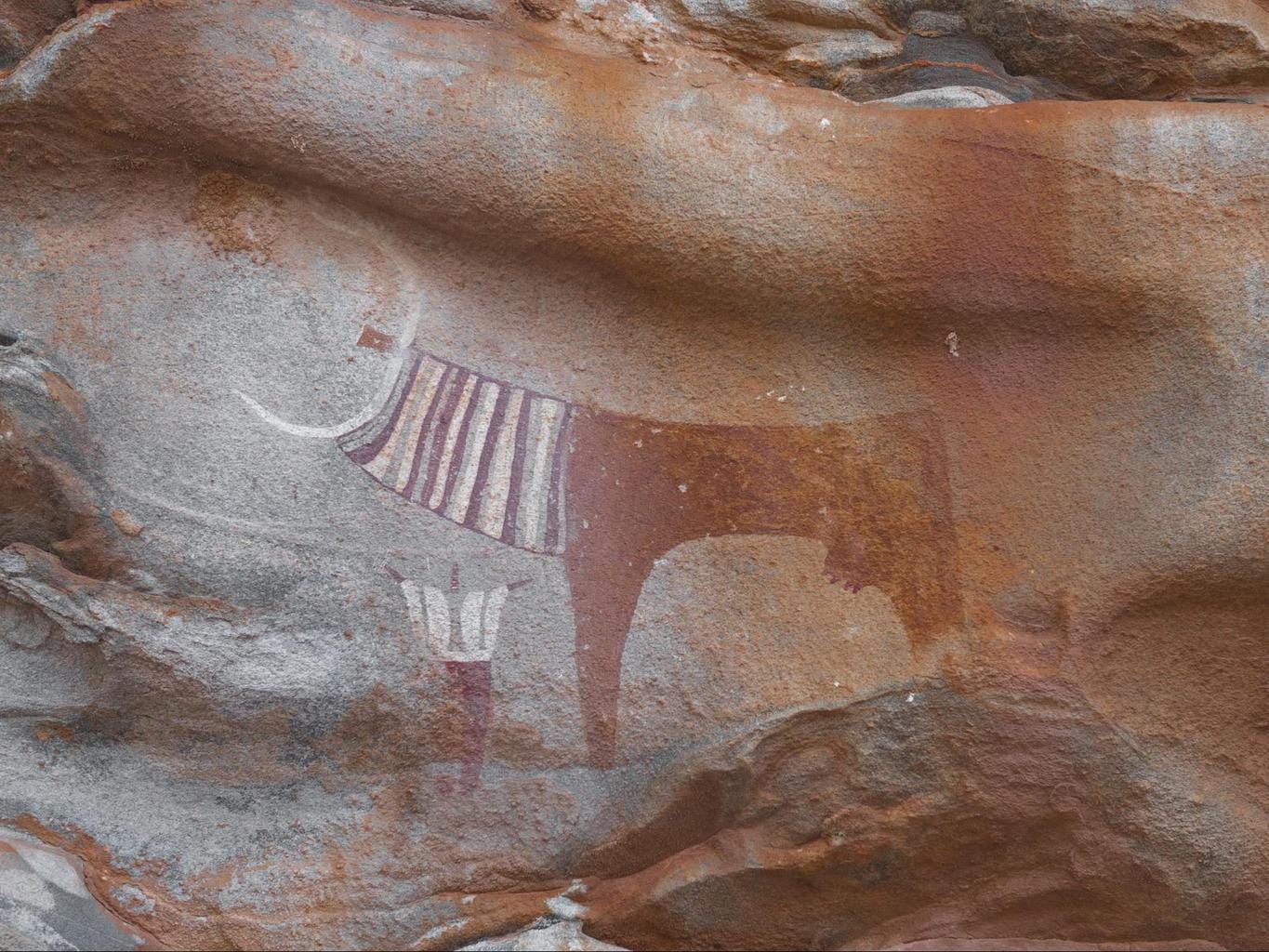
The cows and bulls are decorated and seem to be wearing ceremonial robes. Men and women are drawn differently and can be distinctly recognized. Sometimes, the humans are painted with their arms opened and standing between the legs of the cows. Some theories propose that the human figures revered cows and that is why their arms are stretched out, other suggest that the characters could also be gods.
Shelter no. 1 in Laas Geel
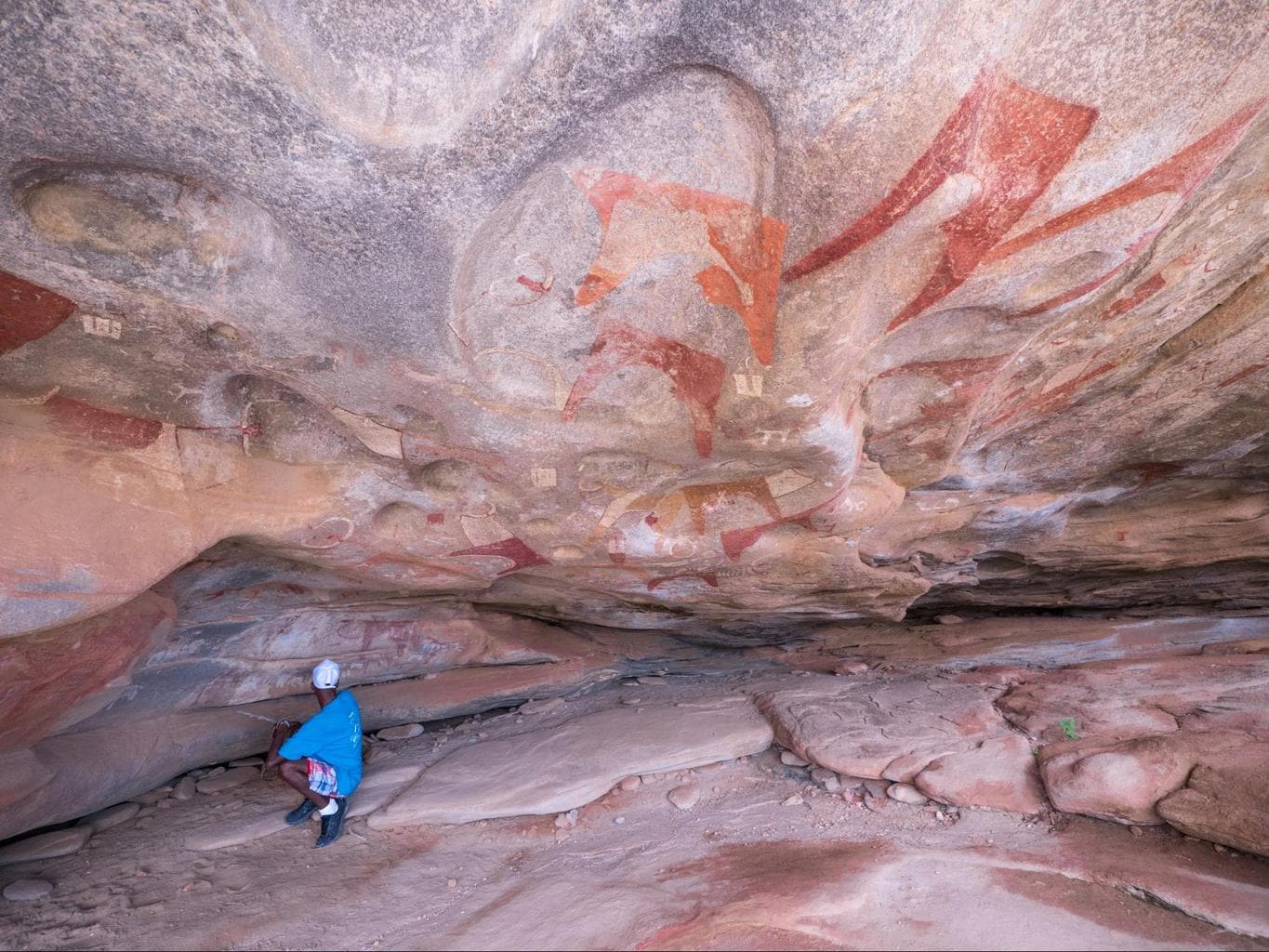
Probably the first shelter you will visit is Shelter no. 1. This is the richest and fullest of the shelters, measures 170 square meters and has 350 depictions. Most of the paintings are pretty well preserved, particularly on the ceiling and walls.
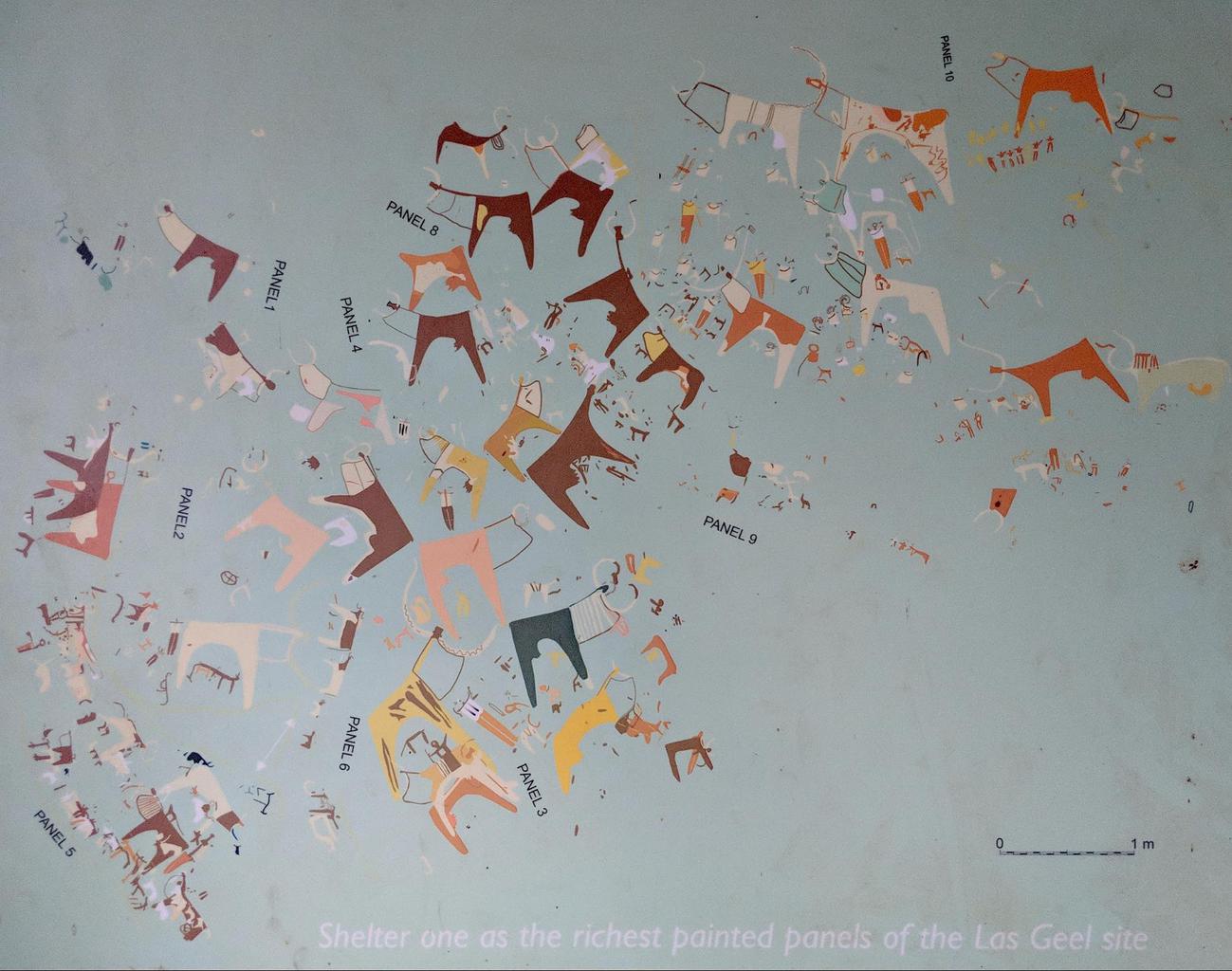
You will have to get down to be able to access the inner part of the cave. It is believed that the entire shelter used to be painted but now only the walls and ceilings. The rest must have eroded due to weather and rain. It is not believed that human interaction has eroded much of the paintings but it is mostly due to natural effects.
Shelter 7 in Laas Geel
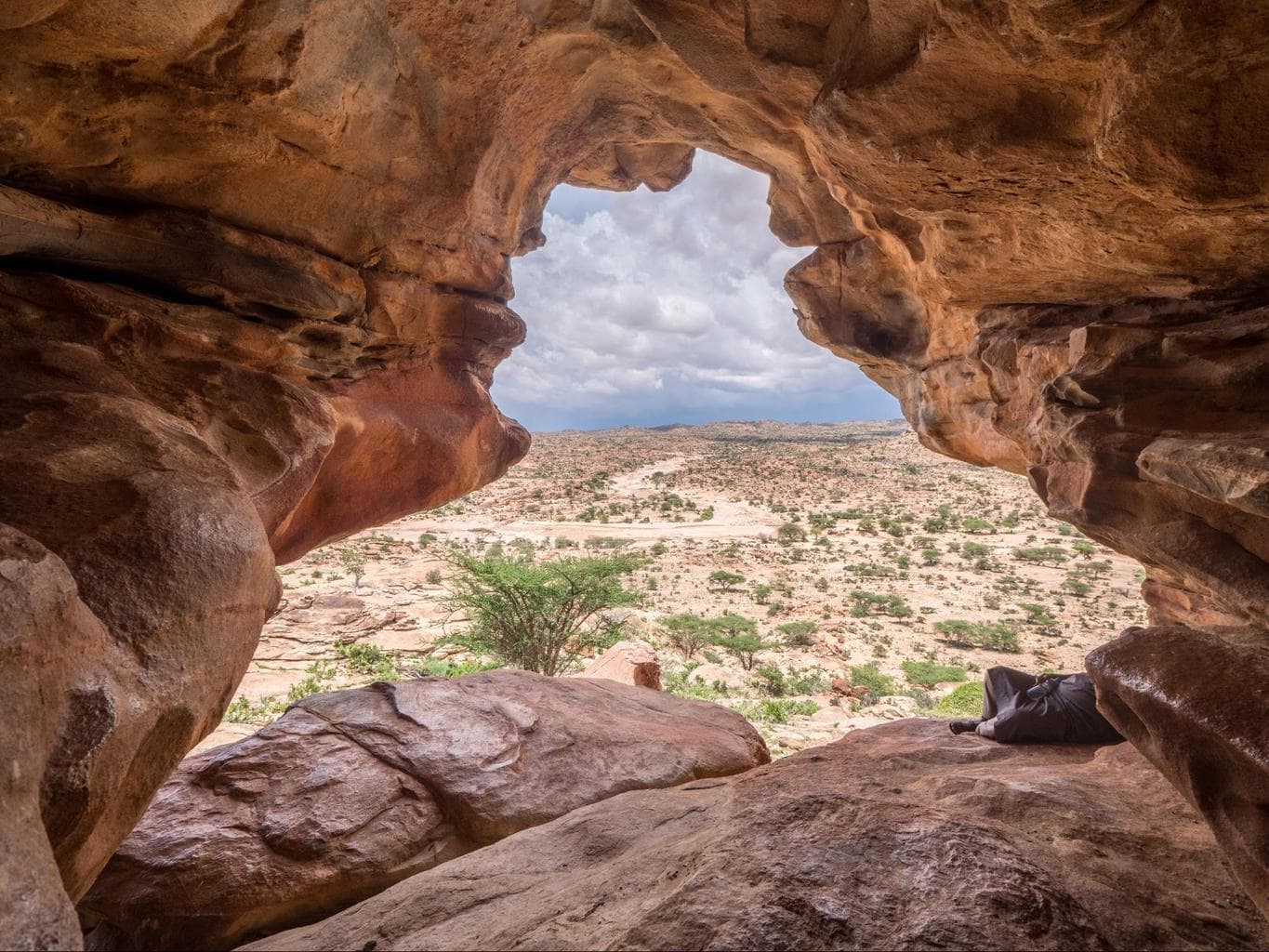
This was the test pit for the archaeologists that discovered and studied Laas Geel. Getting there is a bit trickier than to shelter no. 1 which has steps all the way because you will need to climb a little on all fours. Proper shoes are essential here. Once at the top, the views over the plains below and the wadis are spectacular.
This shelter has a lot of sediment accumulated which allowed the scientists to perform some tests to understand the age and materials used in the rock art. Sadly, the tests were inconclusive and only approximate dates for the art can be used based on the fragments found. These allowed the scientists to date Laas Geel at least back to 3,500 BC and 2,500 BC making them the oldest Neolithic Art in the Horn of Africa.
How to organise and plan a visit to Laas Geel
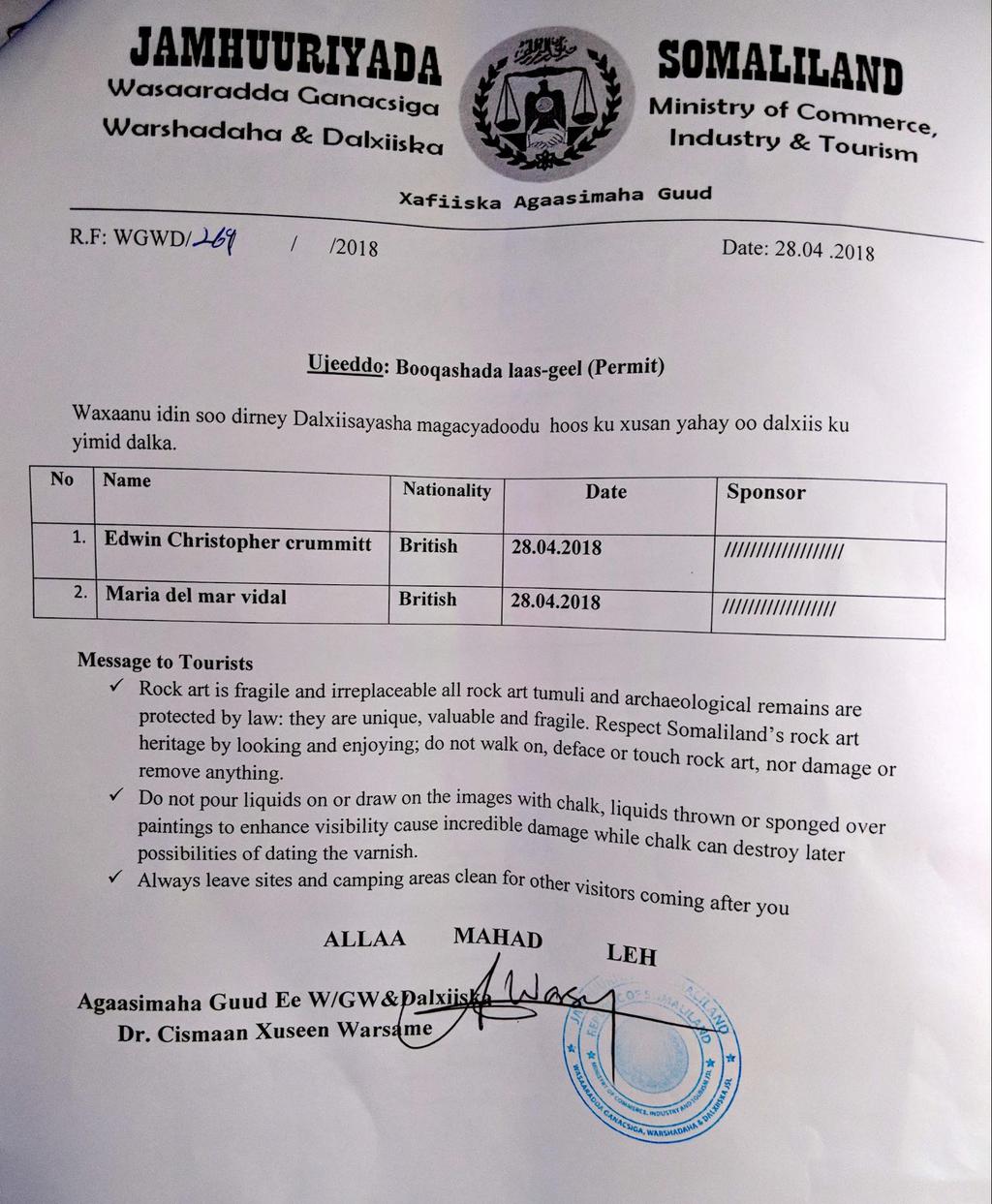
To visit Laas Geel you will need a permit from the Ministry of Tourism which can be obtained in the offices and which we paid $50 for two people. This changes all the time but the latest procedure involved going to the Ministry of Tourism office, talking to the officials there, giving our passports and getting a permit which allowed us to visit. Then, you need a driver and a police escort.
You can read more about safety in Somaliland on my other post here but basically, any trip outside of Hargeisa requires the guard services of the Special Police Unit. This is a rule that was instituted after the last terrorist attacks in Somaliland in 2003 and is a measure decided by the government to avoid any bad press associated with foreigners being harmed.
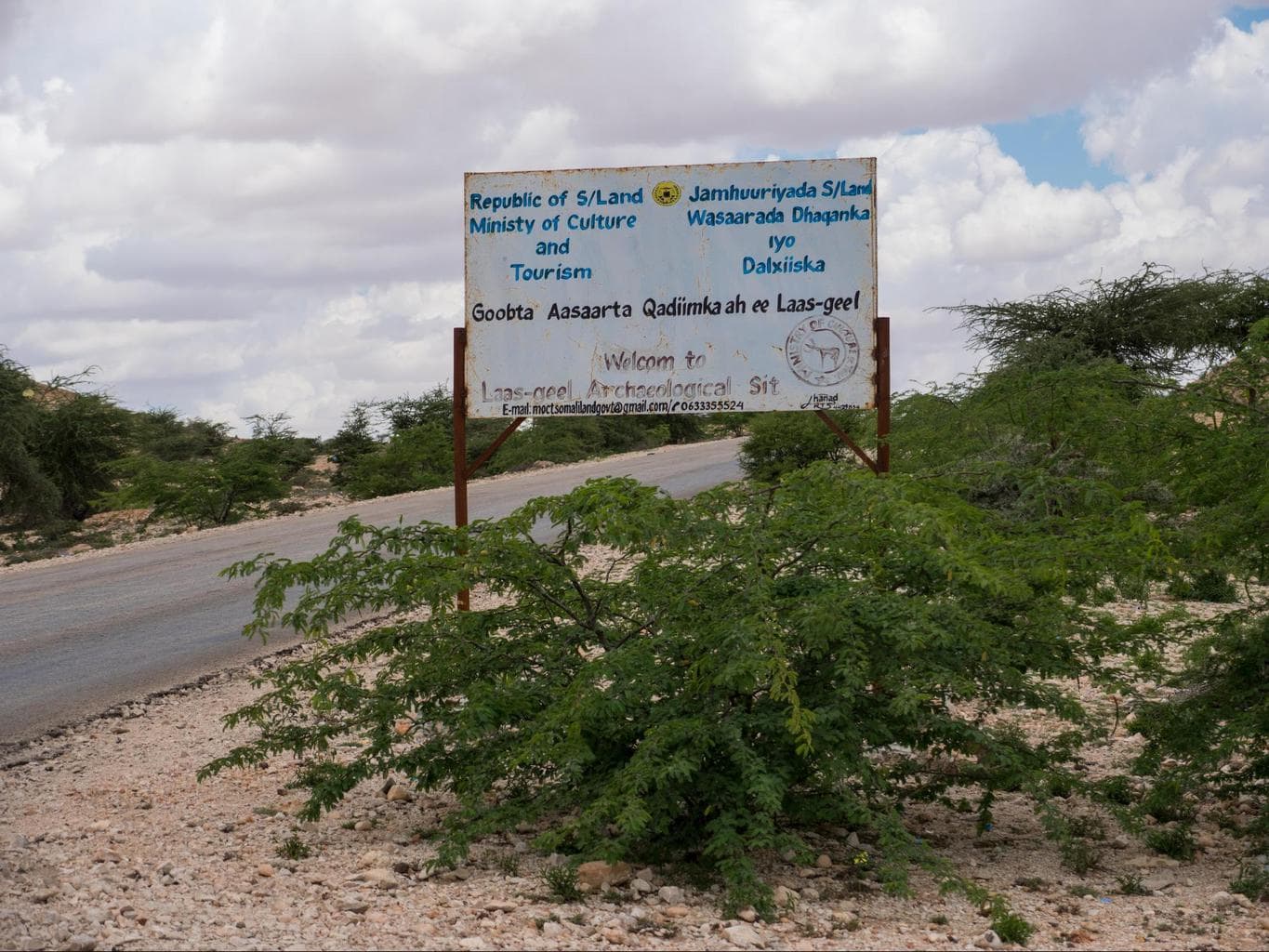
If you are on an organised tour or with your own guide for the duration of your stay, like I did, this will all be taken care of by the company. If you arrive in Somaliland independently the most reliable way to organise a trip to Laas Geel is to head to the Oriental Hotel which is the meeting point for travellers and acts as a de facto travel agency, for lack of any alternatives. This is also a means to finding another traveller to share the costs with as the driver for the day costs around $100 and the police escort about $20 so it can be pricey if you are on a budget.
Laas Geel is located 45 kilometers from Hargeisa on the road from the capital to the coastal city of Berbera and it took us just under 2h to get there because you can’t drive very fast.
The road to Berbera, the famous Highway 1, is not really a highway but is in good state until it reach the turning point toward Laas Geel when it becomes just a gravel road that sometimes disappears under the dust for lack of any traffic. A 4×4 is recommended, especially if you are visiting in the rainy season when sudden flash floods can leave you stranded for hours.
After about an hour on the Highway 1 you will see a worn off sign by the side of the road indicating Laas Geel is near, there is little more in the way of tourism signage. Then the gravel road will appear to the right hand side. About half way through the gravel road there is a hut which should be manned by a security person but it was empty when I was there.
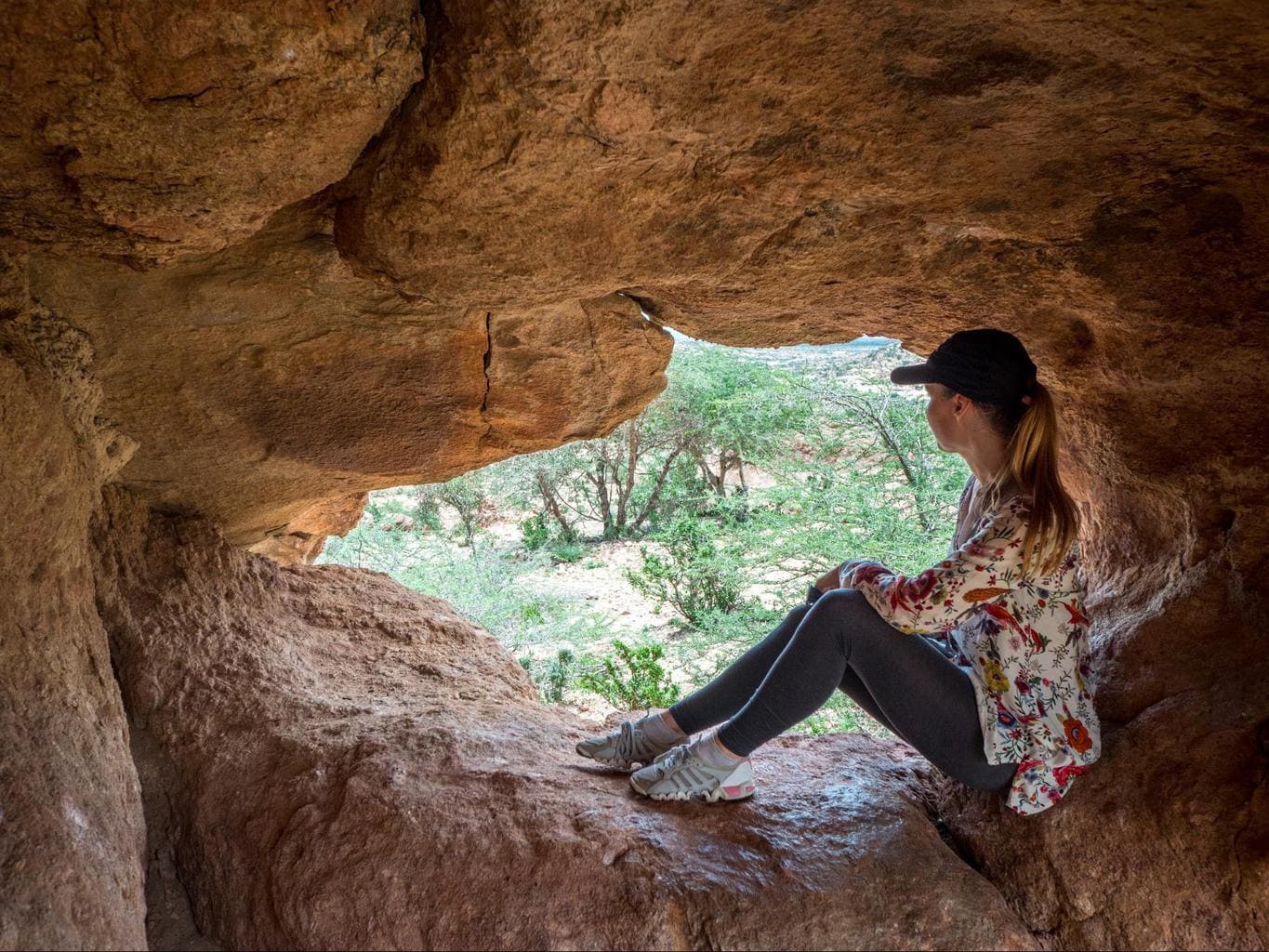
The entrance to the site of Laas Geel and the parking lot where you will leave your car is by the side of a small cement one-floor, one-room building that serves as a museum of sorts and where some additional information on the site is displayed, including the archeological team and the meaning of some of the paintings.
There is always a minder there who will escort you and your guide, if you have one, through the caves. If you are not bringing your own guide, the minder may or may not speak English. The person in charge of the site since its opening is an old man from the area remembered by most visitors as a knowledgeable and passionate guide. He speaks English and is fascinated by Laas Geel. He was the shepherd who guided the first scientists into the caves.
Sadly, when I visited, he was not there and his son took over his responsibilities. Unfortunately, the son did not seem to have any interest in Laas Geel, touched the paintings with his bare hands and looked high on khat. He also spoke no English. It was quite sad to see such little interest in something so valuable and at risk of disappearance if proper conservation efforts are not put in place.
At the end of our visit a visitors book was presented so we could leave our thoughts. Then I realised that the last visitor to the site, or at least the last one to leave a comment, had been there two weeks before our visit.
What to bring to Laas Geel
It is important to be appropriately dressed for a visit to Laas Geel as there are a lot of shelters and sites you can visit but you need the right footwear. A pair of sports shoes will do but make sure they have some grip as the rocks can be slippery. As a woman I did not cover my head in Laas Geel. It was just me, my friend,our guide and the local keeper and it was extremely hot so I wanted to wear a hat instead. Sunscreen and a hat are indeed necessary as there is little shade beyond the shelters themselves. I was also attacked by tsetse flies at the entrance so beware and bring repellent.
- Check if you need a visa, get help processing it at iVisa.
- Never ever leave without travel insurance. Get affordable coverage from World Nomads or long term insurance from Safety Wing.
- I find all of my flights on KAYAK. Check their Deals section too.
- Search for all your transportation between destinations on the trusted travel booking platform Bookaway.
- I book all my day trips and tours via GetYourGuide, they are the best and their tours are refundable up to 24h in advance.
- Get USD35 off your first booking with Airbnb.
- Compare hotels EVERYWHERE at HotelsCombined and book with Booking.com.
- Compare car rental prices at Rentalcars.com
